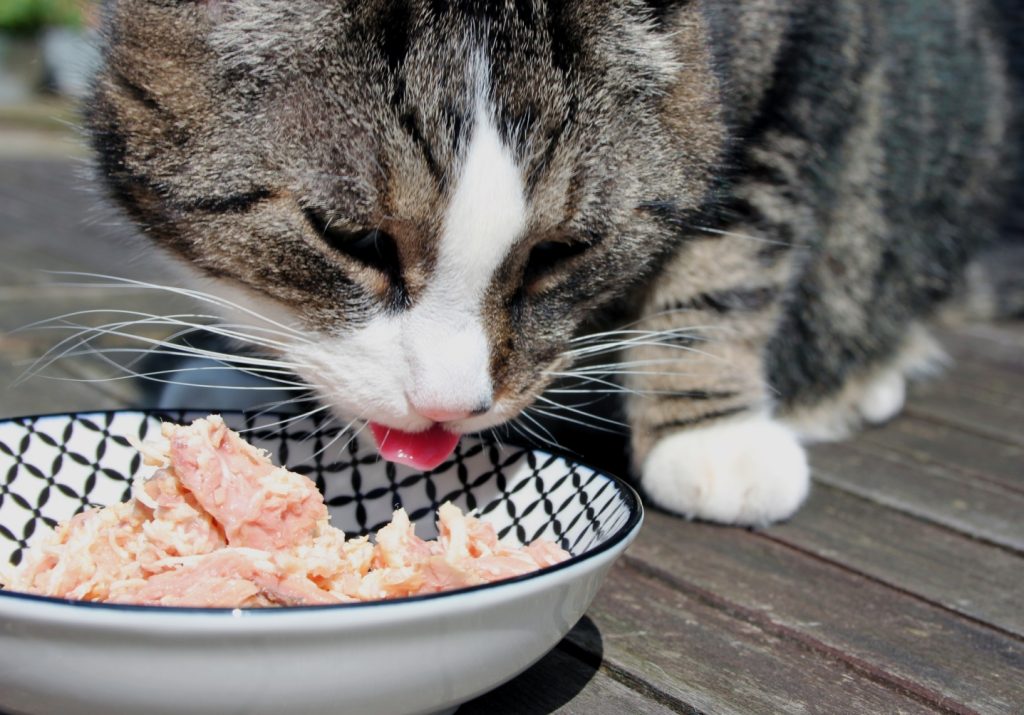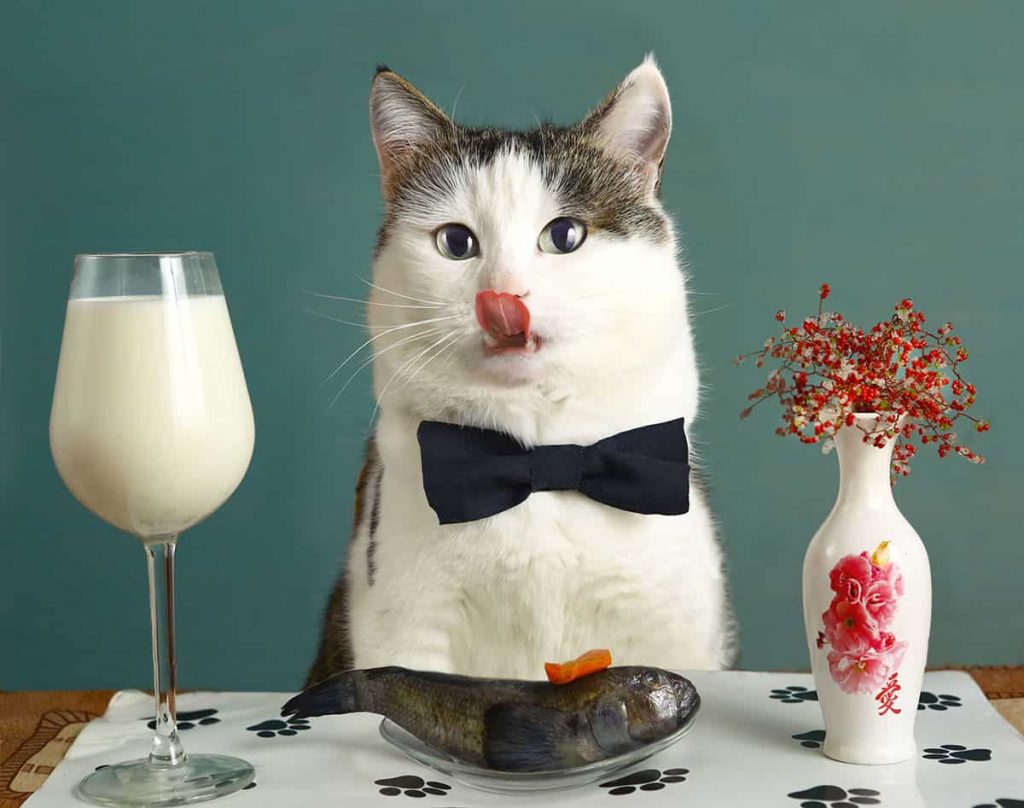Cats are incredibly active animals by nature. They are born hunters and masters of sneaking around. Still, indoor cats are not as active as they should be. Wild felines hunt their prey, and their diet is diverse. On the other hand, home cats don’t have the luxury of choosing their food. They eat whatever their owners serve to them. That’s usually pre-made canned food.
Pre-made feline meals that you can buy in the supermarket or pet shop come in handy. Your cat will get the necessary nutrients and meet daily caloric requirements. But, industrial food shouldn’t be on a menu of indoor cats every day. Well-balanced meals with no artificial ingredients, adapted to your pet’s metabolic needs, are a much better choice.
If you like to cook, you can test your culinary skills on your furry buddy. A delicious, meaty meal is something your pet can always eat. Be creative in the preparation, and use only cat-friendly foods. Depending on your preference, there are various recipes with fantastic reviews that can change your kitty’s diet for better.
Benefits of Home-Cooked Cat Meals
One of the best ways to keep an eye on your pet’s food intake is by preparing meals for them yourself. You can find plenty of ideas and great recipes online. Most of them don’t require a lot of prep time while they’re healthier alternatives to industrial cat food—no artificial ingredients, aromas, and colors, and most importantly, no toxins.
Essential advice is to use the dietary gram scale to weigh the ingredients until you become accustomed to the measurements. Another important thing is to perfectly blend all the ingredients before serving the meal to your feline. That way, your furry buddy won’t choke.
The great thing about homemade cat meals is that you can prepare meals for several days. That’s both convenient and cost-effective. All the food must be kept frozen or at least refrigerated. Warming up the meals in the microwave after defrosting is advisable because of your cat’s taste palette.
Meeting Cat’s Nutritional Needs with Right Ingredients

When you cook meals for your furry buddy, make sure to mix the right ingredients to get the best protein/fat/fiber balance. Carbs and fats are mostly sources of energy. Yet, the specificity of cat metabolism is that it gets most of the energy from proteins.
Cats are carnivores, so don’t expect them to be thrilled with vegan meals. Meat is the most important source of proteins. Whether you prepare the lamb, beef, pork, or chicken, always choose leaner pieces of meat for your feline. Excellent alternatives are tuna, salmon, and rice.
Fats are not the primary source of energy in cats, but they need this nutrient to preserve internal organs, hair, and heart. Meat contains fats of animal origin that meet the nutritional needs of felines. But you won’t go wrong if you add a tablespoon or two of any vegetable or fish oil to your pet’s meal.
Carbs are not necessary for cats, but they do need fibers. These macronutrients help digestion and are essential for the proper functioning of intestines. You can enrich homemade meals with pumpkin, sweet potato, barley, corn, white rice, or peas (but no more than 50 grams). Make sure everything is heat-treated.
Raw Meat Diet
The ancestors of your furry buddy in the wild ate raw meat. But their physiological needs were different. Domesticated cats lead fairly lazy lives. They do not need raw meat every day. But giving these meals from time to time (every 3 or 4 days) will be good for your pet.
This recipe is enough to cover the meal plan for up to two weeks for an average adult feline. Start with two pounds of a finely ground rabbit or fowl meat, including skin and bones. Remove internal organs because their benefits on cats are still not researched.
Add half a pound of chopped chicken hearts and livers. These are natural sources of iron and magnesium, and also contain healthy fatty acids. Make sure to add ¾ teaspoon of salt with iodine and a spoon of powdered taurine as well.
More on the importance of this micronutrient read on the link below:
https://feline-nutrition.org/nutrition/no-bull-taurine-is-a-must-for-kitty.
Finally, adding two raw egg yolks or cooked whites will help bind the meat with other ingredients acting as glue. Pour up to one cup of warm water in the mixture for easier stirring. Wild salmon oil is essential for the taste. You can be generous with four tablespoons for this amount.
Make a paste-looking meal that your feline will adore. Keep it in a freezer for up to one month. Don’t warm up this food – reheating raw meat is not healthy. Just let it sit at room temperature to defrost before serving.
Fish Meat Diet

Some cats prefer fish, while some don’t like this type of food as much. However, not every fish will trigger your pet’s whiskers as some might. Make sure to discover which types your furry buddy likes, but try to use sea fish mostly.
Tuna, salmon, and trout are usually the ones that most felines will eat. If you decide to go with canned fish, make sure to use the ones that are canned in salty water, not oil. Take 4 oz of any fish (cooked or canned) and mash it in the bowl. Adding one hardboiled egg and one tablespoon of canola oil will blend the mix.
The meal for your feline is ready, but it’s essential to add extra vitamins. You can crush one multiple-vitamin pill and two bonemeal tablets and sprinkle them over the mix. You can serve this dish fresh. If there are any leftovers, you can keep them in a fridge for day or two.
Whichever food you decide to cook for your pet, you’ll help it grow to a healthy and happy feline. Both cooked and raw meat meals are excellent for your kitty’s health and development. Make sure to provide them with tasty and well-balanced homemade dishes.



